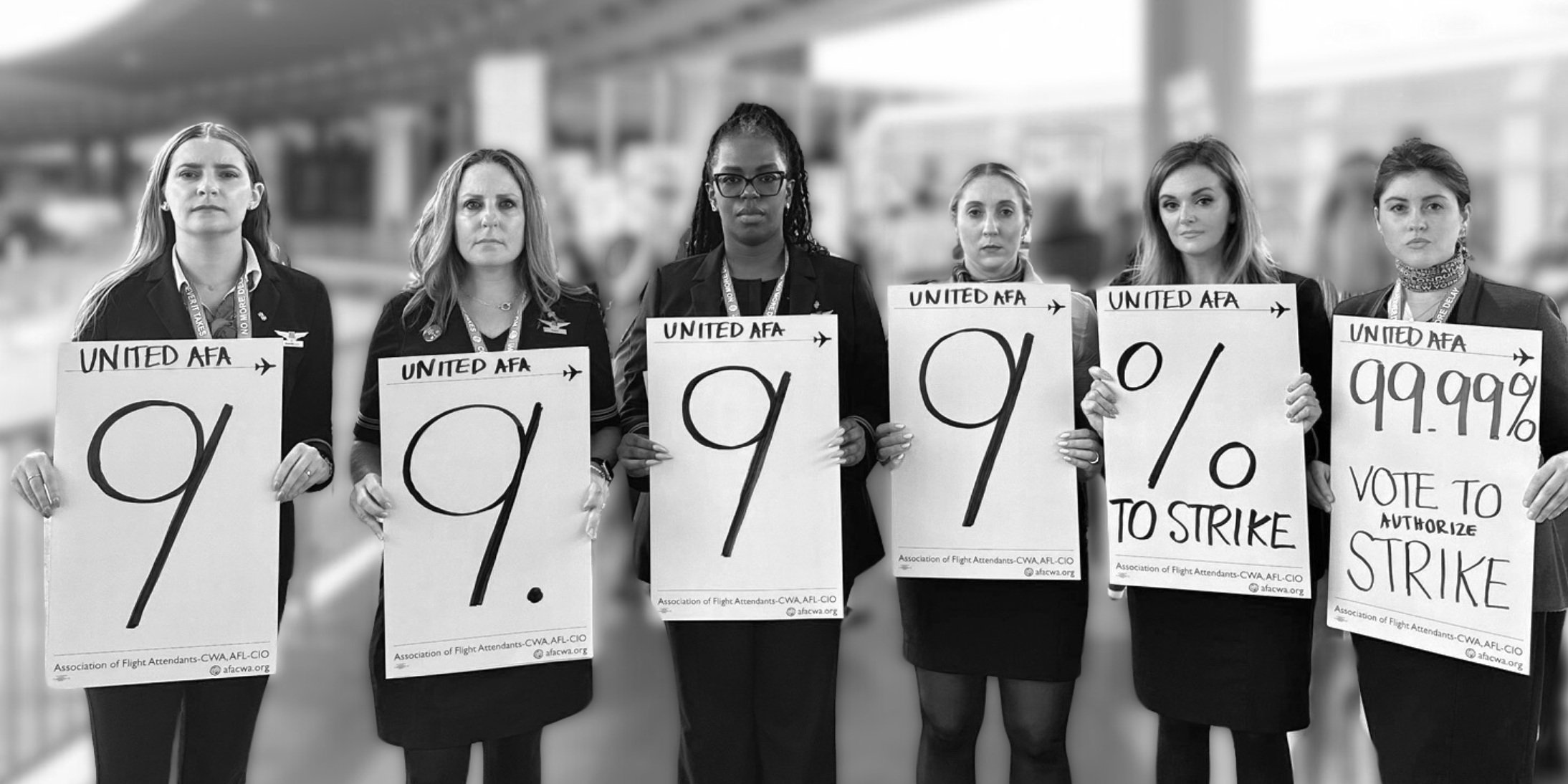
The Strike Authorization Vote is now closed!
Thank you for participating and voting for our future!
Flight Attendants at United Airlines Vote 99.99% to Authorize a Strike
CHICAGO (August 28, 2024) — United Airlines Flight Attendants, represented by the Association of Flight Attendants-CWA (AFA), voted 99.99% yes, with 90.21% participating, on strike authorization should management fail to agree to significant improvements. The results of the vote were announced live, simultaneously, on nearly 20 informational picket lines at airports across the country.
“We deserve an industry-leading contract. Our strike vote shows we’re ready to do whatever it takes to reach the contract we deserve,” said Ken Diaz, president of the United chapter of AFA. “We are the face of United Airlines and planes don’t take off without us. As Labor Day travel begins, United management is reminded what’s at stake if we don’t get this done.”
This is the first time since the 2005 bankruptcy negotiations that Flight Attendants at the major airline voted on strike authorization. Recent strike authorization votes have propelled negotiations forward at American, Alaska, Southwest, and other airlines.
United Flight Attendants are demanding significant double-digit base pay increase, pay for time at work on the ground, retroactive pay to the amendable date, schedule flexibility and work rule improvements, job security, retirement and more.
“The United management team gives themselves massive compensation increases while Flight Attendants struggle to pay basic bills,” Diaz continued. “The 99.99% yes vote is a clear reminder that we are unified in the fight against corporate greed and ready to fight for our fair share of the profits we create.”
Now that members have authorized a strike, the union could request a release from the National Mediation Board (NMB) leading to a 30-day "cooling off" period and strike deadline. AFA has a trademarked strike strategy known as CHAOS™ or Create Havoc Around Our System™. With CHAOS, a strike could affect the entire system or a single flight. The union decides when, where and how to strike without notice to management or passengers.
United Flight Attendants filed for federal mediation over eight months ago and have been working under an amendable contract for nearly three years.
###
The Legal Rationale for
CHAOS™ is, first and foremost, a contract campaign strategy that is designed to provide flight attendants with the economic leverage necessary to reach a consensual labor contract without striking. Since its inception at Alaska Airlines in 1993, the mere "threat" of CHAOS intermittent strike activities has proven invaluable in convincing carriers that negotiations are preferable to economic warfare against AFA. Despite the unparalleled success of CHAOS in
promoting good faith negotiations, some skeptics remain convinced that CHAOS is illegal. Since its inception at Alaska, In fact, as discussed below, CHAOS is not only lawful under the Railway Labor Act ("RLA"), it actually works to promote reconciliation and prevent strikes, which is the primary reason Congress enacted the RLA in 1926.
-
Unlike any other U.S, labor statute, the RLA commits negotiating parties to a "purposely long and drawn-out" collective bargaining process for creating or altering labor agreements.
Once the process is initiated, the parties are subject to virtually endless "negotiation, mediation, voluntary arbitration and conciliation." Detroit and Toledo Shoreline R.R. v. United Transportation Union, 396 U.S. 142, 152-153 (1969). In return for participating in this almost interminable process, the federal courts have given the parties a virtual "free hand" in fashioning the economic self-help they may choose to employ once the negotiations process has failed. As the Supreme Court has made clear on many occasions, once the parties have exhausted the RLA's bargaining procedures, "the Act is wholly inexplicit as to the scope of allowable self help." Trainman, 394 U.S. at 391; Burlington, 481 U.S. at 447-448. As the Supreme Court stated in TransWorld Airlines v. IFFA, 489 U.S. 426,439 (1989) ("IFFA ''.):
[P]arties who have unsuccessfully exhausted the Railway Labor Act's procedures for resolution of major dispute ... [may] employ the full range of whatever peaceful economic power they can muster, so long as its use conflicts with no other obligation imposed by federal law' Trainmen, 394 U.S. at 391-392.
The same result was found in the Burlington case, where the Supreme Court refused to stop a union from using secondary picketing as a legitimate form of self-help once the parties had exhausted their RLA bargaining obligations: In upholding that right, the Court found that the Norris-LaGuardia Act, which prohibits federal courts from issuing injunctions in labor disputes, prevents Judge from imposing their personal notions of acceptable self-help, as the RLA is silent on that issue:
[The carriers] concede, as they must, that the RLA does not contain an express mandate limiting the scope of self-help available to a union once the RLA's major dispute resolution procedures have been exhausted ... [The carriers] read too much into the silence of the Act. The RLA's silence could just as easily signify an intent to allow the parties to resort to whatever self-help is legally available at the time a dispute arises. Faced with a choice between ambiguity in the RLA and the unambiguous mandate of the Norris-LaGuardia Act, we choose the latter.
-
While acknowledging that the RLA's fundamental purpose is the prevention of disruptions to interstate commerce, the Court found that secondary picketing actually aided that goal by encouraging parties to reach agreement before they are forced to deal with consequences of economic warfare:
Although we agree with petitioners that the primary goal of the RLA is to settle strikes and avoid interruptions to commerce, we see nothing in the RLA to indicate that Congress intended to permit federal courts to enjoin secondary activity as a means toward that end. An injunction does not settle a dispute -- it simply disables one of the parties. Moreover, 'in view of the interests of both parties in avoiding a strike.' Virginian R. Co. v. Railway Employees, 300 US. 515, 552 (1937), the availability of such self-help measures as secondary picketing may increase the effectiveness of the RLA in settling major disputes by creating incentive for the parties to settle prior to exhaustion of the statutory procedures.
Burlington, 481 U.S. at 452; see also, Chicago & N WR. Co. v. Transportation Union, 402 U.S. 570, 597-598 (1971) (BRENNAN, J., dissenting) ("As the statutory machinery nears termination without achieving settlement, the threat of economic self-help and the pressures of informed public opinion create new impetus toward compromise and agreement").
These Supreme Court decisions establish clearly that the threat of economic warfare and disruption is an essential element of the negotiation process. Without the right to strike and engage in economic disruption, employees would have no leverage and carriers would have no incentive to compromise and reach agreement on new terms and conditions of employment.
-
Consistent with the Trainmen, Burlington, and /FFA, decisions, the two (2) federal courts that have directly addressed the legality of post-release intermittent work stoppages have ruled such activity to be a permissible form of economic self-help under the RLA. Pan Am World Airways v. lnt'l Bhd. OJ Teamsters, 894 F.2d 36 (2d Cir. 1990) ("Pan Am"); Association of Flight Attendants, AFL-C/O v. Alaska Airlines, 847 F.Supp. 832 (W.D. Wash. 1993).
In Pan Am, the union waited over a year after the expiration of the cooling-off period before initiating intermittent work stoppages. The job actions "at various Pan Am facilities consist[ed] primarily of hour-long work stoppages for union employee meetings and assemblies." Pan Am, 894 F.2d at 38. The court rejected Pan Am's argument by analogy to the National Labor Relations Act ("NLRA"), 29 U.S.C. § 141 et seq., that such intermittent work stoppages are "an impermissible form of self-help under the RLA." Id. at 40. As the court stated:
Pan Am argues that intermittent work stoppages are illegal under the RLA because such stoppages are 'unprotected' activity under the NLRA. The Supreme Court has emphasized, however, that NLRA principles “cannot be imported wholesale into the railway labor arena. Even rough analogies must be drawn circumspectly, with due regard for the many differences between the statutory schemes.” One relevant difference between the statutory schemes is that primary enforcement of the NLRA is by specialized agency, the National Labor Relations Board, which is the original source of the rule that intermittent work stoppages are unprotected activity. The range of permissible statutory glosses available to such an agency is greater than that afforded courts, and we therefore decline to embark on a similar course of drawing fine distinctions between forms of self-help under the Railway Labor Act.
In AFA v. Alaska Airlines, Inc., 847 F.Supp. 832 (W.D. Wash. 1993) ("Alaska"), the district court adopted the reasoning of Pan Am and refused to declare AFA's CHAOS program of intermittent strikes unlawful under the RLA:
Similarly, this court finds it would be improvident to import such distinctions from the NLRA into the RLA and thus declines to determine whether the CHAOS work stoppages would be considered protected or unprotected activity under the RLA scheme.
-
Accordingly, the Alaska court ordered the carrier to stop "indefinitely suspending, discharging, or threatening to discharge flight attendants who participate in CHAOS intermittent work stoppages" and ordered the reinstatement the seventeen flight attendants indefinitely suspended as a result of their participation in an intermittent work stoppage. Alaska 847 F.Supp. at 838.As a direct result of that ruling, Alaska dropped its demand for contract concessions and agreed to a new CBA that provided substantial raises to the Alaska flight attendants.
While there exists only two court decisions directly addressing the legality of intermittent strikes, given the Supreme Court's repeated pronouncements that it will not judge the propriety or scope of a union's self-help activity following the exhaustion of the RLA's mandatory bargaining procedures, the legality of intermittent strikes cannot be doubted. Intermittent strikes are merely another form of economic self-help that "increases the effectiveness of the RLA in settling major disputes by creating incentive for the parties to settle prior to exhaustion of the statutory procedures." Burlington, 481 U.S. at 452. Not only is CHAOS lawful, it is has been supremely effective in convincing carriers to engage in good faith negotiations. Since the Alaska ruling in 1993, AFA has successfully negotiated a collective bargaining agreements at every carrier that has used CHAOS - without having to strike a single flight.
Conclusion
The lawfulness of AFA's CHAOS contract strategy is not a contest between the employee's right to strike and the carrier's ability to maintain its flight operations free of disruption. If that were the standard, then any strike that is disruptive would be declared unlawful - a result clearly not contemplated by Congress in enacting the RLA. Rather, the measure of CHAOS's legality is its success in avoiding strikes and promoting the negotiation of consensual labor agreements that benefit AFA members. By that measure, CHAOS' legality cannot be questioned. Without the threat of CHAOS, the likelihood of full-blown strikes would undoubtedly increase, and the resolution of contract disputes would diminish - a result contrary to the RLA. CHAOS acts as a lever that restores the Negotiations "balance of power" between labor and management that ultimately promotes the resolution of contract disputes.






